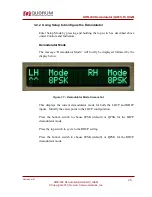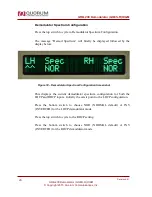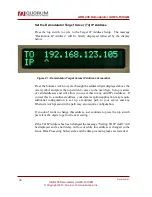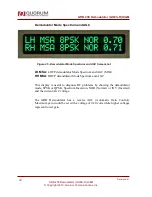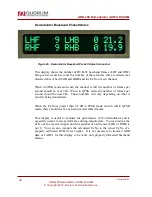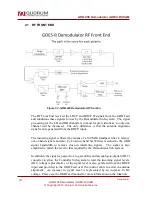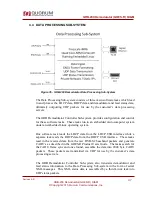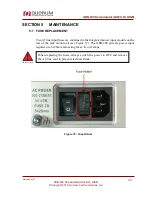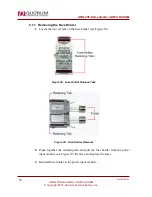
GRB-200 Demodulator (GOES-R) OI&M
GRB-200 Demodulator (GOES-R) OI&M
© Copyright 2015, Quorum Communications, Inc.
Revision A.01
36
Demodulator Baseband Packet Status
Figure 29 - Demodulator Baseband Packet Status Screenshot
This display shows the number of DVB-S2 baseband frames (LHF and RHF)
being received each second, the number of these frames that are detected as
uncorrectable or bad (LHB and RHB) and the Es/No of each channel.
When in 8PSK mode and when the channel is full the number of frames per
second should be near 360. When in QPSK mode the number of frames per
second should be near 266. These numbers will vary depending on what is
actually being transmitted.
When the Es/No is greater than 6.9 dB in 8PSK mode and 6.6 dB in QPSK
mode, there should not be any bad (uncorrectable) frames.
This display is useful to evaluate the performance of the demodulator and is
especially useful to test performance during manufacture. You can reduce the
Es/No of the received signal until the number of bad frames (LHB or RHB) is
not 0. You can also compare the calculated Es/No to the actual Es/No of a
properly calibrated DVB-S2 test signal. It is not necessary to transmit GRB
data or CADUs for this display to be valid, only properly formatted baseband
frames.




